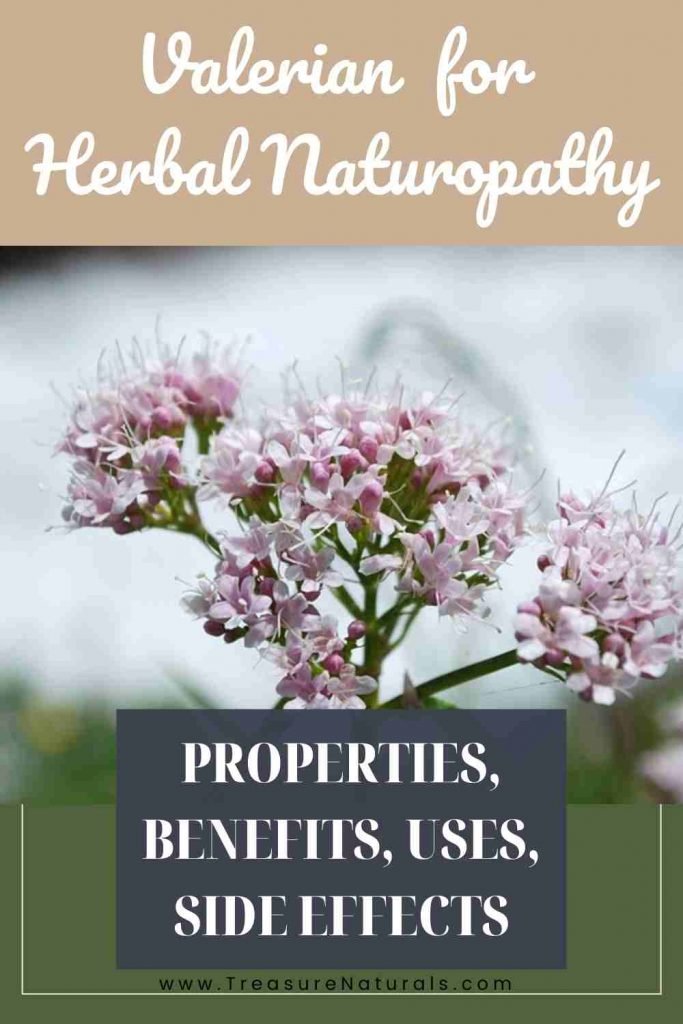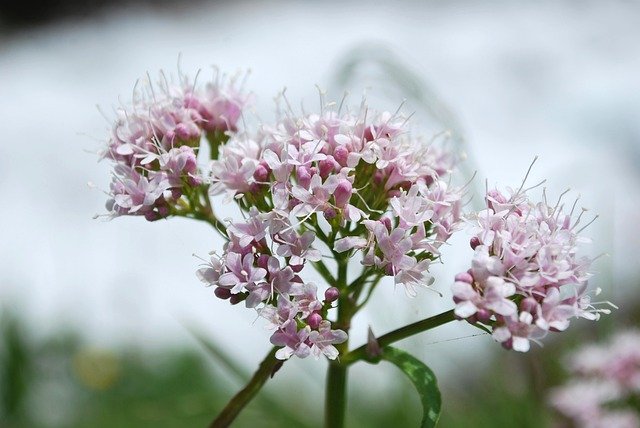
Valerian is a sedative plant useful against anxiety, insomnia and tachycardia. Let’s find out the properties, use, benefits and contraindications of valerian.
Valerian (Valeriana officinalis)is a plant of the Valerianaceae family widely used for the treatment of anxiety, agitation and sleep disorders.
Properties of valerian
Valerian root, with its unmistakable unpleasant smell, contains essential oils that in turn include moterpene compounds (especially derived from borneol) and sesquiterpene (valerenic acid, valerenal acid, valeranone and beta-caryophyllene). The valerian drug also contains iridoid compounds called valepotriates, some lignans and modest amounts of alkaloids.
Valerian has anxiolytic and sedative properties given by the set of its constituents and, in particular, to valerenic acids. These compounds are able to act on GABAergic control mainly through the inhibition of presynaptic degradation and reuptake of GABA and the promotion of its synthesis, thanks to the activation of an enzyme called glutamate decarboxylase.
What is valerian used for
The active ingredients present in valerian, as we have seen, act on the regulation of the neurotransmitter GABA.
Since GABA is an inhibitory neurotransmitter, substances that increase the activity of GABAergic synapses depress the activity of the central nervous system, with a relaxing and anxiolytic effect. Not surprisingly, many drugs with calming, muscle relaxant, anticonvulsant and hypnotic action act by stimulating GABA receptors (in technical terms they are said to be its receptor agonists).
Benefits of valerian
The sedative, relaxing and hypnoinducing properties make valerian a useful remedy in case of anxiety, agitation and insomnia.
In addition, since the valepotriates present in valerian root have spasmolytic action capable of relaxing smooth muscles, valerian can also be useful to counteract the symptoms of irritable bowel syndrome.
How to use
Valerian root can be taken in the form of a dried drug to be used for decoctions or in the form of tablets or mother tincture.
Infusion
Valerian herbal tea is prepared witha tablespoon of valerian root in a cup of water. After placing the valerian root in cold water, it is left to macerate for 8-10 hours. Alternatively, pour boiling water over the root, turn off the heat and leave to infuse for 15 minutes with a lid.
Valerian mother tincture
Take 20-50 drops diluted in a little water, one to three times a day in case of anxiety, or 30 minutes before going to sleep to fight insomnia.
Valerian extract
It is taken in tablets, capsules or as valerian in drops without exceeding 500-600 mg per day. It is usually given twice a day.
How long does it take for valerian to take effect?
The benefits of valerian can be appreciated after a few weeks of use. Typically, the effects of valerian on sleep are manifested after four to six weeks of administration.
Contraindications of valerian
Administration of valerian is contraindicated in children under the age of 12 years. The use of valerian in pregnancy and during lactation is also to be avoided.
Valerian should not be used in conjunction with barbiturates, other sleeping pills, tranquilizers and alcohol because an enhancement of the effects may occur, causing tremor in the hands, dizziness and drowsiness .
Side effects of valerian
Valerian is considered a safe drug but can cause side effects at high dosages. Symptoms caused by valerian overdose include fatigue and tremors.
Description of the plant

The valerian plant is a herbaceous and perennial, equipped with a rhizome from which develops an erect stem and furrowed on the surface by grooves, which can reach up to a meter in height.
The leaves are opposite and without stipules, with petiole present only in the lower ones (the upper ones are sessile); all are composed and imparipinnate, consisting of 11-19 lanceolate leaflets with whole or toothed foil and a beautiful intense green color.
The flowers, slightly perfumed, are found gathered to form a particular type of inflorescence called corimbo; they are hermaphrodites, with reduced calyx and corolla with 5 petals, tubular and light pink in color.
The fruit is a striated achene provided with feathery bristles deriving from the modification that the small teeth of the calyx undergo with maturation. Their presence helps their dispersion by means of the wind.
The drug consists of the rhizome which, as a result of drying, gives off a characteristic and unpleasant odor due to the formation of short-chain fatty acids.
Habitat of valerian
Native to the wooded regions of Europe and Asia, it is also widespread in North America and in the South American tropical regions. It prefers cool and humid environments, grows in shady meadows up to an altitude of 1400 meters.
Background
The botanical name comes from the Latin valere, which means “to be healthy“, ” to have strength“. The popular name, cat grass, comes from the fact that the fresh plant exerts an attraction of an “amazing” type on cats, which destroy it by rubbing on it, and this is perhaps the reason why, despite being decorative, it is rarely found in gardens.
Valerian has been known since ancient times and in the Middle Ages was considered a panacea. It is said that Fabio Colonna, a famous scientist of the 1500s, cured epilepsy thanks to this plant.
Valerian is not used in cooking. It is often confused with valerianella (Valerianella locusta) belonging to the same family, known as “songino” which provides a delicious salad.






